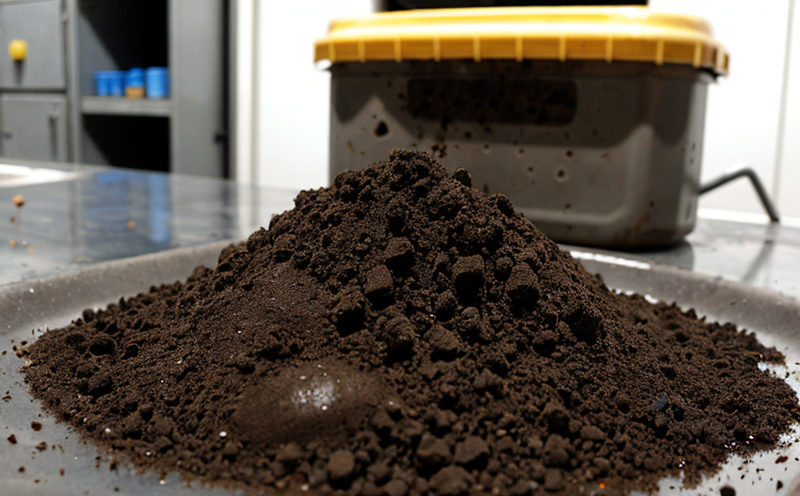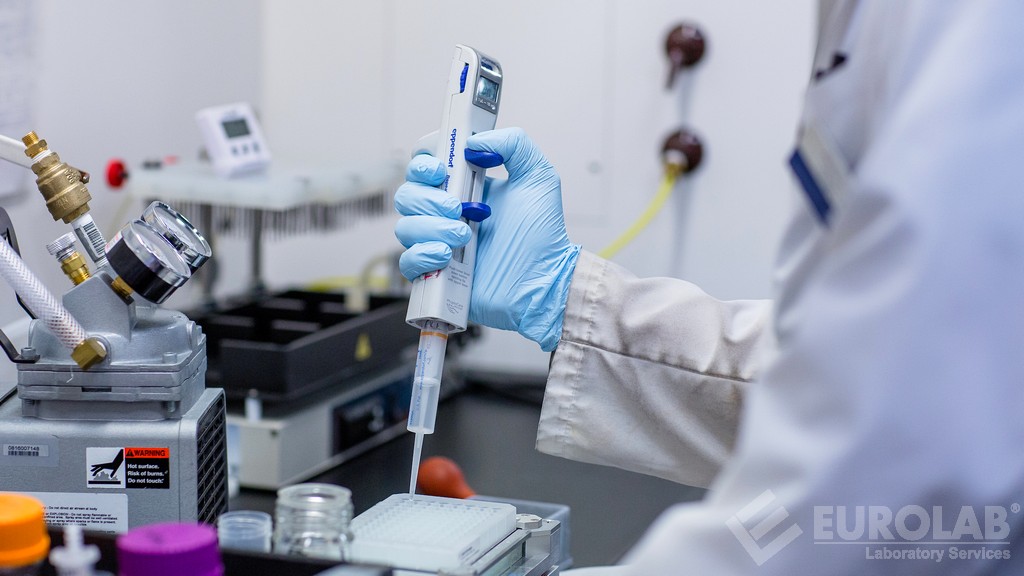EPA 8081 Organochlorine Pesticide Residues by GC
The EPA Method 8081 is a widely recognized and rigorously standardized procedure for the analysis of organochlorine pesticides in water, soil, and other environmental samples. This method employs gas chromatography (GC) to separate and quantify residues of these persistent organic pollutants (POPs). The EPA introduced this method as part of its comprehensive approach to monitoring and controlling pesticide contamination.
The primary goal of EPA 8081 is to ensure the safety and quality of water supplies by identifying and quantifying organochlorine pesticides that can pose health risks. These pesticides, including DDT, chlordane, heptachlor, and aldrin, are known for their long-lasting nature in the environment. The method provides a robust framework for laboratories to achieve consistent and reliable results across different analytical platforms.
The process involves several critical steps: sample preparation, extraction of residues using a solvent such as dichloromethane (DCM) or hexane, clean-up procedures like solid-phase extraction (SPE), and final analysis by gas chromatography with flame photometric detection (FPD). The method requires strict adherence to predefined limits for the recovery of pesticides, ensuring accurate quantification. Laboratories must validate their methods against these standards before performing routine analyses.
One of the most challenging aspects of EPA 8081 is the thorough sample preparation phase, which includes:
- Grinding and sieving solid samples to ensure homogeneity
- Thoroughly mixing liquid samples
- Soaking samples in extraction solvents for extended periods
- Using appropriate clean-up techniques to remove interferences
The gas chromatography step is equally complex, requiring precise column selection and temperature programming. The FPD detector adds another layer of complexity due to its sensitivity requirements.
A key benefit of EPA 8081 lies in its ability to detect trace levels of pesticides that might otherwise go undetected. This capability is crucial for ensuring compliance with stringent environmental regulations, particularly those set by the EPA.
Another significant advantage is its versatility, as it can handle a wide range of sample types, including water and soil samples. The method's robustness makes it suitable for both routine monitoring and research applications.
The method’s reliability has been validated through extensive interlaboratory comparisons. These studies demonstrate the consistent performance across different laboratories, which is essential for maintaining confidence in analytical results.
Despite its advantages, EPA 8081 also presents challenges such as:
- High cost of reagents and solvents
- Long analysis time
- Precise instrumental setup and calibration requirements
- Complex sample preparation procedures
To address these issues, laboratories must invest in high-quality instrumentation and well-trained personnel. Regular method validation and participation in proficiency testing programs are also crucial.
| Step | Description |
|---|---|
| Extraction | Solid samples are extracted with dichloromethane or hexane. Liquid samples require thorough mixing and extraction. |
| Cleanup | SPE cartridges are used to remove impurities, enhancing detection sensitivity. |
| Concentration | The extracts are concentrated under a stream of nitrogen gas. |
| Dilution | The concentrated extract is diluted with a solvent before injection into the GC system. |
In conclusion, EPA 8081 is an indispensable tool for laboratories involved in environmental monitoring and compliance. Its rigorous standards ensure accurate and reliable detection of organochlorine pesticide residues, thereby supporting sustainable practices and public health.
Why It Matters
The analysis of organochlorine pesticides using EPA Method 8081 is crucial for environmental protection and public health. These pesticides are persistent in nature, meaning they do not degrade easily in the environment. As a result, they can accumulate over time, leading to significant risks if not properly managed.
Organochlorines have been associated with various adverse health effects, including neurotoxicity, reproductive disorders, and cancer. Water supplies are particularly vulnerable due to their ability to dissolve in water and persist for long periods. Monitoring these residues is essential to ensure compliance with environmental regulations and to protect public health.
The method also plays a critical role in assessing the effectiveness of remediation efforts. By regularly analyzing contaminated sites, laboratories can track changes in pesticide levels over time. This information helps policymakers make informed decisions about further actions needed to restore ecosystems and safeguard water supplies.
Moreover, EPA 8081 supports research into the environmental fate and effects of these pesticides. Understanding how they behave in different environments allows scientists to develop more effective strategies for their management and eventual elimination.
Industry Applications
EPA Method 8081 finds extensive application across various sectors, including:
- Water treatment facilities: Ensuring compliance with EPA regulations and public health standards.
- Agriculture: Monitoring pesticide residues in soil to prevent contamination of water supplies.
- Environmental consulting firms: Providing data for environmental impact assessments.
- Government agencies: Conducting national surveys on the presence of organochlorine pesticides in various media.
The table below outlines typical applications and sample types analyzed by EPA 8081:
| Application | Samples Analyzed |
|---|---|
| Water treatment facilities | Raw water, treated water, effluents |
| Agriculture | Cultivated soils, irrigation waters |
| Environmental consulting firms | Soils, sediments, surface waters |
| Government agencies | Water supplies, agricultural products |
The method is particularly important for ensuring that water and soil do not exceed acceptable levels of organochlorine pesticides. Exceeding these limits can lead to penalties under environmental laws and pose serious health risks.
In addition to its regulatory role, EPA 8081 also supports scientific research into the behavior and effects of these persistent pollutants. By providing accurate data on pesticide residues, it helps researchers develop better methods for their detection and removal.
International Acceptance and Recognition
EPA Method 8081 is widely recognized internationally for its reliability and accuracy in detecting organochlorine pesticides. Its acceptance extends across multiple countries and international organizations, including:
- The United States Environmental Protection Agency (EPA)
- European Union (EU) directives on pesticide residues
- World Health Organization (WHO) guidelines for water quality
- International Organization for Standardization (ISO) standards
The method’s robustness and consistency have been validated through extensive interlaboratory comparisons. These studies demonstrate the method's reliability across different laboratories, ensuring consistent and comparable results worldwide.
Additionally, EPA 8081 is often cited in international agreements aimed at reducing pesticide contamination. Its widespread adoption underscores its importance in global efforts to protect public health and the environment.
The method’s acceptance by major international bodies contributes significantly to its credibility and utility. Compliance with this standard enhances a laboratory's reputation and ensures that they meet the highest quality standards required for environmental monitoring.





